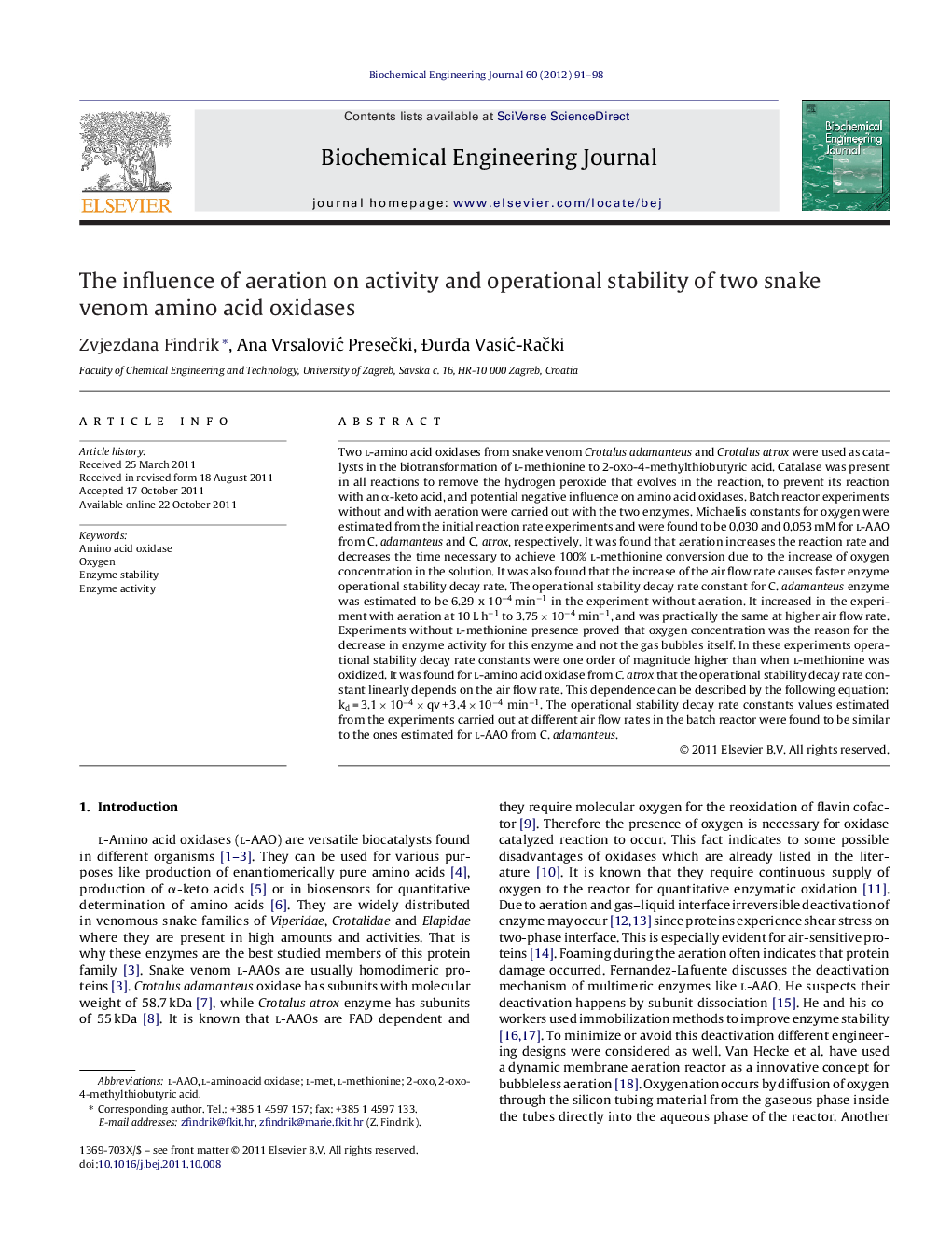| Article ID | Journal | Published Year | Pages | File Type |
|---|---|---|---|---|
| 3667 | Biochemical Engineering Journal | 2012 | 8 Pages |
Two l-amino acid oxidases from snake venom Crotalus adamanteus and Crotalus atrox were used as catalysts in the biotransformation of l-methionine to 2-oxo-4-methylthiobutyric acid. Catalase was present in all reactions to remove the hydrogen peroxide that evolves in the reaction, to prevent its reaction with an α-keto acid, and potential negative influence on amino acid oxidases. Batch reactor experiments without and with aeration were carried out with the two enzymes. Michaelis constants for oxygen were estimated from the initial reaction rate experiments and were found to be 0.030 and 0.053 mM for l-AAO from C. adamanteus and C. atrox, respectively. It was found that aeration increases the reaction rate and decreases the time necessary to achieve 100% l-methionine conversion due to the increase of oxygen concentration in the solution. It was also found that the increase of the air flow rate causes faster enzyme operational stability decay rate. The operational stability decay rate constant for C. adamanteus enzyme was estimated to be 6.29 x 10−4 min−1 in the experiment without aeration. It increased in the experiment with aeration at 10 L h−1 to 3.75 × 10−4 min−1, and was practically the same at higher air flow rate. Experiments without l-methionine presence proved that oxygen concentration was the reason for the decrease in enzyme activity for this enzyme and not the gas bubbles itself. In these experiments operational stability decay rate constants were one order of magnitude higher than when l-methionine was oxidized. It was found for l-amino acid oxidase from C. atrox that the operational stability decay rate constant linearly depends on the air flow rate. This dependence can be described by the following equation: kd = 3.1 × 10−4 × qv + 3.4 × 10−4 min−1. The operational stability decay rate constants values estimated from the experiments carried out at different air flow rates in the batch reactor were found to be similar to the ones estimated for l-AAO from C. adamanteus.
► Two snake venom amino acid oxidases were used as catalysts. ► The influence of oxygen on enzyme activity was measured. ► The influence of aeration rate on enzyme operational stability was examined. ► Aeration increases reaction rate, but has a negative effect on enzyme operational stability.
